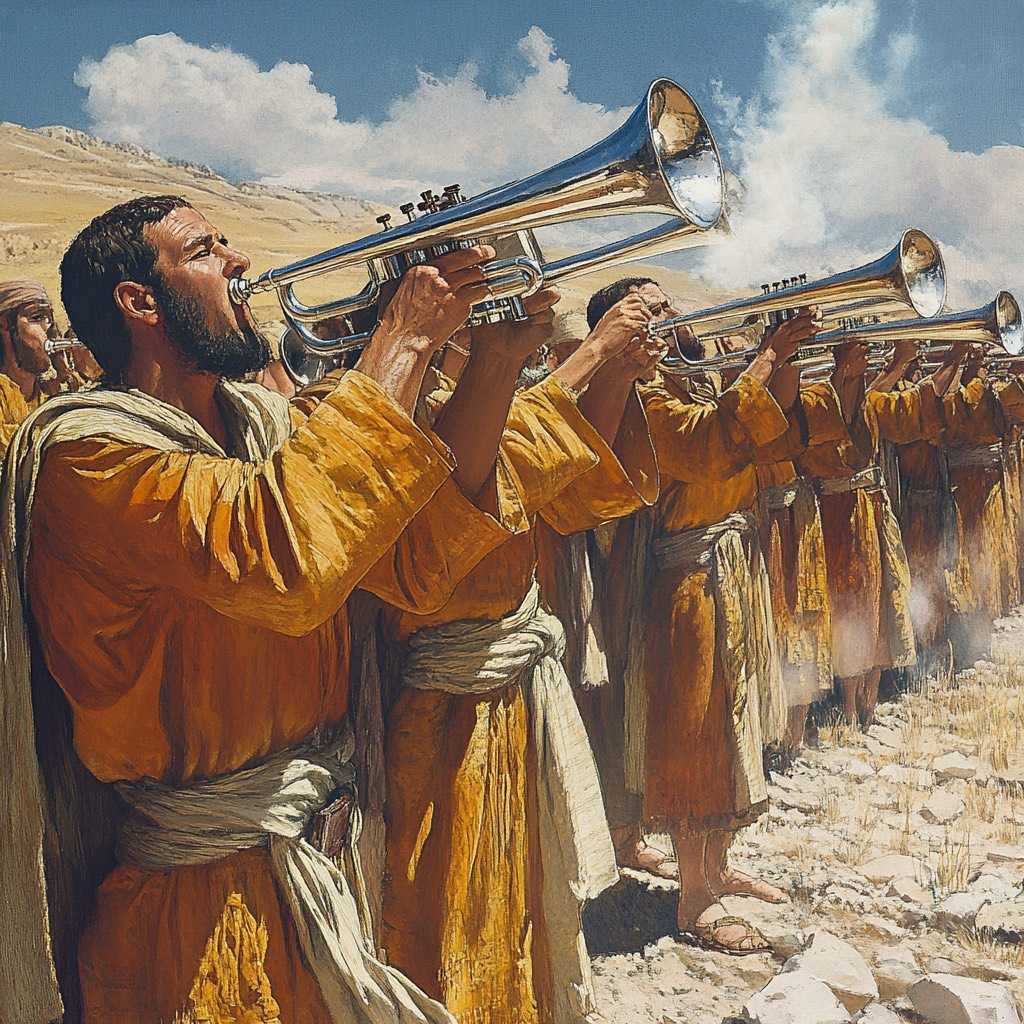Camp maintenance and regulations (Numbers 5-10)

These chapters cover various laws and rituals, the dedication of the Tabernacle, the observance of the Passover, and the beginning of Israel’s journey through the wilderness. Each section reflects God’s desire for holiness, order, and the faithful guidance of His people.
Numbers 5: Laws of Purity and Restitution
Maintaining Purity in the Camp
God commanded Moses to ensure that the Israelite camp remained pure and holy. Those who were ceremonially unclean due to skin diseases, discharges, or contact with the dead were to be sent outside the camp until they were cleansed. This was to protect the community and maintain the sanctity of the camp where God dwelt among them.

Restitution and Confession
The chapter also includes laws concerning confession and restitution for sins against others. If someone wronged another, they were to confess their sin and make full restitution, adding a fifth of the value as a penalty. This law emphasized the importance of justice, accountability, and making things right with both God and others.
The Test for an Unfaithful Wife
Numbers 5 ends with a detailed ritual for determining the guilt or innocence of a wife accused of unfaithfulness. This ritual, though difficult to understand from a modern perspective, was designed to resolve disputes and maintain the sanctity of marriage in the community.

Numbers 6: The Nazirite Vow
The Nazirite Vow
The Nazirite vow was a special commitment made by individuals who wanted to dedicate themselves to God in a unique way. Those who took the vow abstained from wine, avoided cutting their hair, and avoided contact with dead bodies. The vow was voluntary and could be for a specific period or for a lifetime.
The Priestly Blessing
Numbers 6 concludes with the famous Priestly Blessing, which God instructed Aaron and his sons to pronounce over the Israelites. This blessing, often recited today, invokes God’s protection, grace, and peace upon His people:
“The Lord bless you and keep you;
the Lord make his face shine on you and be gracious to you;
the Lord turn his face toward you and give you peace.”

Numbers 7: The Dedication of the Tabernacle
Offerings from the Tribal Leaders
After the Tabernacle was set up, the leaders of each tribe brought offerings for its dedication. Over twelve days, each leader brought silver and gold dishes, grain offerings, incense, and animals for burnt offerings, sin offerings, and fellowship offerings. These gifts were a collective expression of devotion and gratitude to God.
Moses and the Voice of God
The chapter concludes with Moses entering the Tent of Meeting, where he heard the voice of God speaking to him from above the atonement cover on the Ark of the Covenant. This emphasizes the intimate communication between God and His chosen leader, guiding the people on their journey.

Numbers 8: The Consecration of the Levites
Setting Apart the Levites
God commanded Moses to consecrate the Levites for their special service in the Tabernacle. The Levites were cleansed, shaved, and presented before the Lord as a wave offering, symbolizing their dedication to God’s service. They replaced the firstborn males of Israel, who were originally set apart for God.
Serving from Age 25 to 50
The Levites were to begin their service at the age of 25 and retire at 50, after which they could assist but not perform the primary duties. This ensured that the Tabernacle was always served by those in their prime strength.

Numbers 9: The Second Passover and the Cloud of Guidance
The Second Passover
God instructed the Israelites to keep the Passover at its appointed time, one year after their departure from Egypt. Those who were ceremonially unclean or away on a journey were allowed to celebrate the Passover one month later, ensuring that everyone could participate in this critical remembrance of God’s deliverance.

The Cloud and the Fire
God’s presence was manifested as a cloud by day and a pillar of fire by night above the Tabernacle. When the cloud lifted, the Israelites set out, and when it settled, they camped. This guidance continued throughout their journey, showing that they were to move and rest according to God’s direction.
Numbers 10: Setting Out from Sinai
The Silver Trumpets
God instructed Moses to make two silver trumpets to be used for summoning the community and directing the movements of the camps. The trumpets were also used during times of war and on joyous occasions such as festivals. These trumpets served as a means of communication and unity for the people.

The Journey Begins
Finally, the time came for the Israelites to leave Mount Sinai. After nearly a year at the mountain, the cloud lifted, and the people set out in order. The Ark of the Covenant led the way, symbolizing God’s presence going before them. The chapter ends with a prayer from Moses: “Rise up, Lord! May your enemies be scattered; may your foes flee before you.”

Conclusion
Numbers 5-10 highlights the meticulous preparations and deep spiritual significance that marked Israel’s journey through the wilderness. From laws of purity and the Nazirite vow to the dedication of the Tabernacle and the setting out from Sinai, these chapters reveal a God who desires order, holiness, and faithful obedience from His people. As they moved forward, guided by the cloud and fire, the Israelites were continually reminded of God’s presence and provision.
